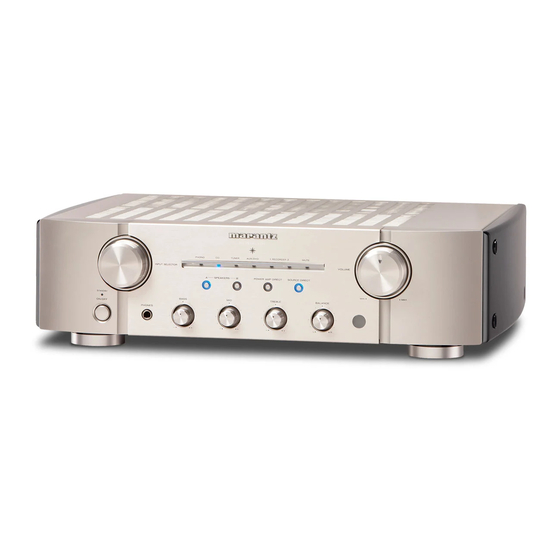I lowered the bias of my Marantz PM8005. It was sucking ~40w sat doing nothing and now I've got it at 27w now after following this service manual for the PM8004 (couldn't find the equivalent page in the 8005 one):

 www.manualslib.com
www.manualslib.com
I used a Fluke 106 to measure the mV from each channel, I got it to around 10-11mv, the manual seems to recommend 12.5 +- 0.5. Originally they were at 20mv. Basically did what this guy did with his PM7000N which looks a heck of a lot like the PM8005 internally:
Are there any downsides to doing this? It's still playing music. Sounds aite. Hasn't gone on fire, the top feels cooler as well after idling for a while. But like I said, I know very little about this kind of stuff. I do know when a PC gets too high or too low voltage for certain things all kinds of bad things can go wrong, but no idea about amps. Would be good if an expert could weigh in on this kind of adjustment

Idling Current Alignment - Marantz PM8004 Service Manual [Page 33]
Marantz PM8004 Manual Online: Idling Current Alignment. Digital Voltmeter L ch T.P. ADJ J707 R707 P701 Adjustment Procedure Set the power voltage to rated voltage for this adjustment. (1) Adjust the Idling Current with the variable resistor R707 and R708 on the PWB P701. (2) Turn off...
I used a Fluke 106 to measure the mV from each channel, I got it to around 10-11mv, the manual seems to recommend 12.5 +- 0.5. Originally they were at 20mv. Basically did what this guy did with his PM7000N which looks a heck of a lot like the PM8005 internally:
Are there any downsides to doing this? It's still playing music. Sounds aite. Hasn't gone on fire, the top feels cooler as well after idling for a while. But like I said, I know very little about this kind of stuff. I do know when a PC gets too high or too low voltage for certain things all kinds of bad things can go wrong, but no idea about amps. Would be good if an expert could weigh in on this kind of adjustment
